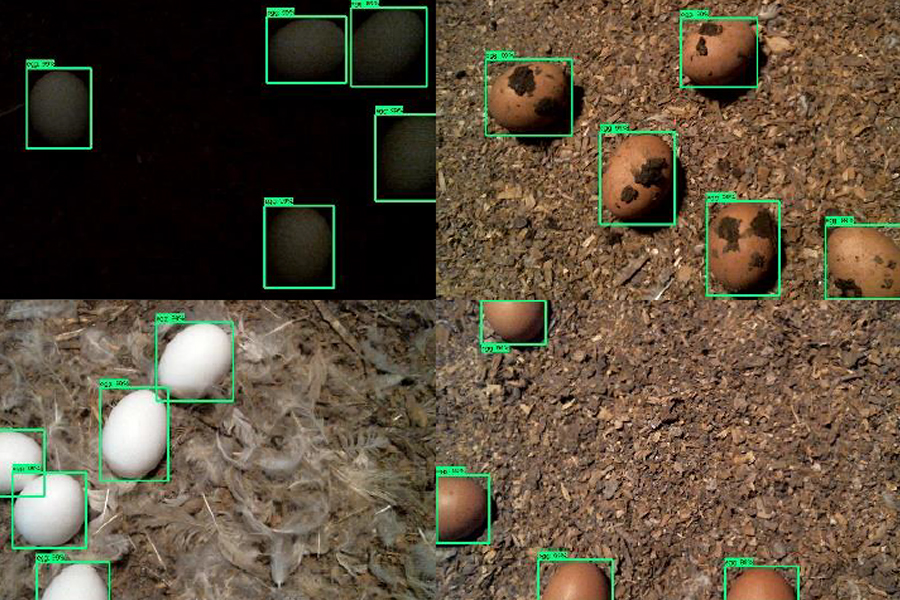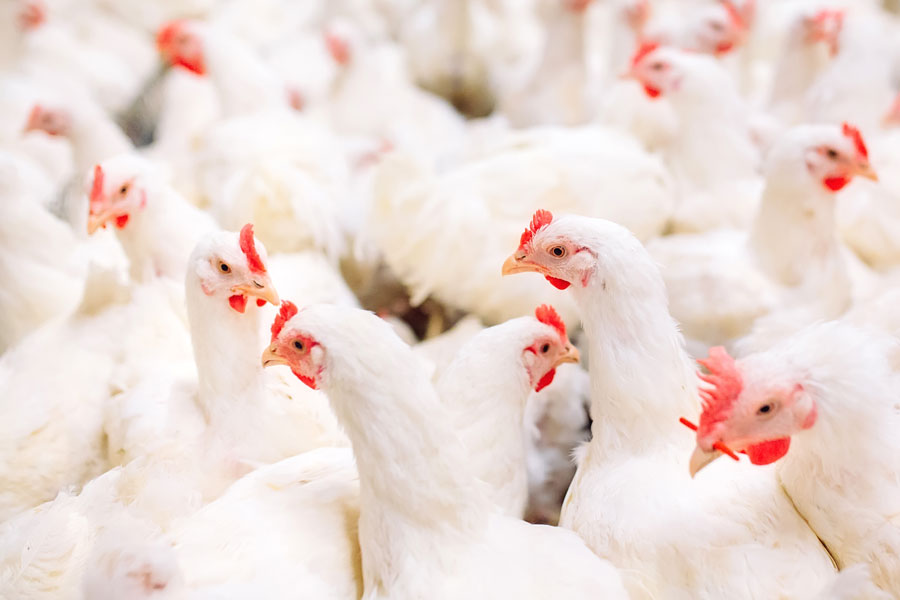Poultry Science
-

The Water Stewardship Act is intended to demonstrate Georgia’s deep commitment to the conservation of critical freshwater supplies. This publication provides an overview of the provisions and obligations for local governments, public systems and state agencies.
Brian H Kiepper
|
-

The USDA-Food Safety Inspection Service (FSIS) indicated that if water is to be reused in a poultry processing facility, then this reuse water must be accounted for in the plant’s HACCP program.
Scott M. Russell
|
-

Researchers have investigated the issue of mislaid eggs in cage-free housing and the possibility of reducing the incidence of floor eggs through management of lighting, litter and bedding, and nesting space, and the use of robotics. Methods with potential for managing mislaid or floor eggs in cage-free layer houses can be summarized as follows: 1. House-lighting time management: In cage-free aviary systems, lighting management is used to help control floor-access time. According to observations in commercial cage-free layer houses, most floor eggs are laid at first light. Delaying floor access time in the morning may help reduce floor eggs by keeping the birds near the nests for the first few hours of light. 2. Light intensity and distribution: Make sure to provide sufficient light intensity evenly across the litter floor. Increasing the light intensity under the aviary system has been tested to be effective at reducing over 80% of floor eggs. 3. Bedding depth: Scratch areas covered with litter help reduce the risk of feather pecking and cannibalism, and minimize flightiness, for hens living in large flocks. However, deep litter attracts birds to lay eggs on the litter itself. According to research conducted at Iowa State University, reducing litter depth discourages hens from laying eggs on floor of commercial cage-free houses. 4. Nesting space: Nesting behavior is a key priority and important welfare indicator for egg production, so providing hens with safe and secure locations to lay eggs is critical. A good nesting design in cage-free systems facilitates egg collection, minimizes the risk of cloacal cannibalism, and assists food safety and sanitation.
Casey W. Ritz, Claudia Dunkley, and Lilong Chai
|
-

The nutrients and organic materials found in poultry litter/manure are extremely beneficial by-products, as evidenced by the fact that years of application have transformed north Georgia from a severely depleted landscape in the 1920s and 1930s to a productive and green one today. Over-application or improper storage of poultry litter, however, can cause nutrient contamination of the state’s waters. Given the size and economic importance of this key agricultural industry, poultry producers must properly use this material to obtain maximum economic value of its fertilizer qualities while assuring protection of the environment.
Dan L. Cunningham and Casey W. Ritz
|
-

This Excel workbook will allow you to fit data from nutritional experiments to several models. It includes a PowerPoint presentation that shows you how to use the Excel workbook to fit several regression models to experimental data. The models may be used to estimate nutritional requirements or the most economical feeding levels of critical nutrients. All you need is Microsoft Excel (with macros enabled), the downloadable Excel file, and some input/output data.
Gene M. Pesti and Esendugue Greg Fonsah
|
-

This publication gives a procedure to calculate the value of broiler litter based on prevailing retail selling prices of commercial fertilizers containing nitrogen, phosphorus and potassium.
L. Mark Risse and Glendon H. Harris
|
-

Disposal of dead birds can be a problem for poultry growers. Typical methods of mortality disposal include burial, incineration, rendering, and composting. Many states have banned the use of burial pits that historically have been used to dispose of dead birds. Incineration can be costly and raise air quality concerns, and the decreasing number of renderers further complicates disposal. Composting is considered a positive alternative method of processing dead birds in an environmentally sound manner. This relatively inexpensive method of using dead birds has gained wide acceptance throughout the poultry industry.
John W. Worley and Casey W. Ritz
|
-

Poultry farming is the number one agricultural enterprise in Georgia. It is important to protect this vital industry by developing prudently-devised and factually-based zoning ordinances. This publication discusses components and terminology when drafting ordinances related to poultry production.
Dan L. Cunningham and Casey W. Ritz
|
-

In commercial poultry houses, bird density and distribution in drinking, feeding, and
resting zones are critical factors for evaluating flock productivity, bird health, and well-being. Proper distribution of chickens in the house greatly influences animal well-being and house environmental management. Currently, routine daily inspection of broiler flock distribution in commercial grow-out houses is done manually, which is labor-intensive and time-consuming. UGA poultry science researchers currently are developing an automated imaging system for monitoring floor distribution of chickens.Ongoing studies are focusing on detection of individual chickens with different gait scores in the research facility. It’s challenging to track individual birds with early health or welfare concerns using a computer vison-based method, but it is necessary and critical for producers to identify birds with well-being concerns and address those issues quickly.
Sammy E. Aggrey, Casey W. Ritz, Todd Applegate, Lilong Chai, and Adelumola Oladeinde
|